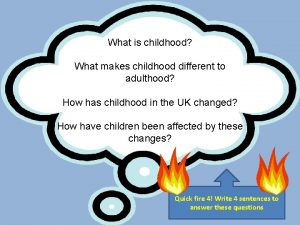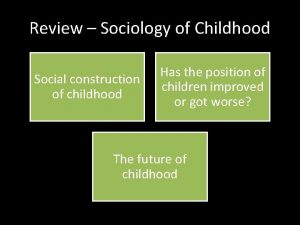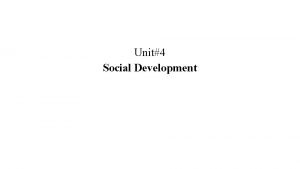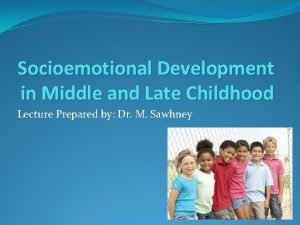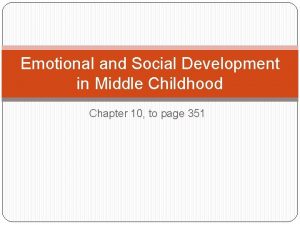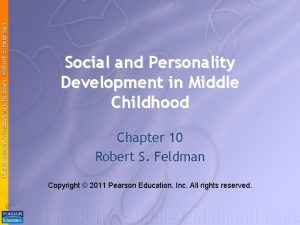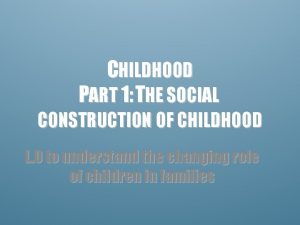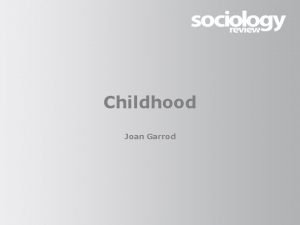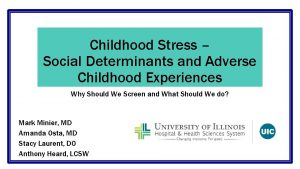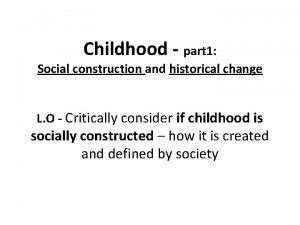The Social Construction of Childhood The Social Construction









- Slides: 9

The Social Construction of Childhood

The Social Construction of Childhood l l l Childhood as an age status is not fixed or universal. The experience and meaning of childhood differs across societies, time periods and between different groups. Childhood is therefore socially constructed – shaped by society.

Childhood experience in preindustrial society. l l Children viewed as ‘tiny adults’ – no real difference between children and adults. Children worked from a young age and were viewed as economic assets – means of bringing in money and supporting the family. Children joined in similar leisure activities to adults and could be punished for criminal offences in the same way adults could. Therefore no real distinction between childhood and adulthood during this period.

Early Industrial Period and Childhood l l Children during this time worked alongside adults. Working class children in particular continued to work in the factories, mines and mills. However, advances in public health and medicine led to a decline in the infant mortality rate amongst the middle classes. This led to a change in attitudes amongst the middle classes to how children were viewed.

Later Industrial Period and Childhood l l l Mid 19 th century Factory/Mine acts meant children were no longer able to work. Children no longer economic assets. 1870 Education Act – Children need to be supported. Further advances in sanitation and medicine meant a decline in the infant mortality rate amongst the working class. This led to a decline in the birth rate – couples had fewer children, because the children they had were more likely to survive. Also, children no longer economic assets. This led to a change in attitudes towards children – children came to be seen as different to adults and in need of love, care and support.

20 th Century l l l Child centred society – Children are viewed differently to adults and are viewed as in need of support and protection. Society is geared towards putting the interests of children first. Childhood has come to be seen as a separate category from adulthood. Children’s toys, clothes, programmes, books, foods etc -

Policy and the development of childhood l l l Policy is geared towards protecting children and has also played a part in shaping this different age status. Age of Consent Factory Acts - Contemporary employment legislation. 1870 Education Act 1980 Child care Act 1991 Child Support Act

Is Childhood disappearing in Modern society? Neil Postman states that childhood is disappearing. Children are able to experience things that previously were only available to adults. The Mass media is largely responsible for this. l l

Factors shaping childhood experience l Other factors which shape the experience of childhood resulting in different experiencesl Culture l Social Class l Gender l Ethnicity
